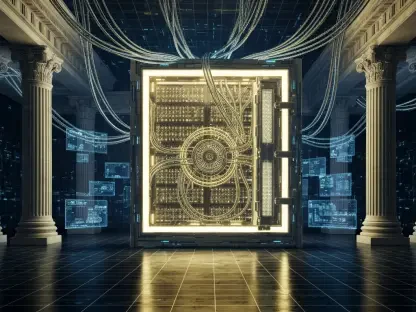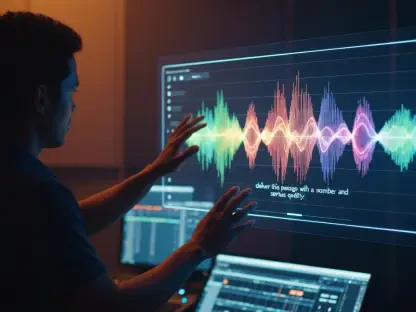In an era where digital communication shapes the way thoughts are expressed, even the smallest updates to operating systems can ripple through the writing community with surprising impact. Microsoft’s latest enhancement to Windows 11, introducing a streamlined keyboard shortcut for the em dash—a punctuation mark used to indicate breaks in thought or parenthetical phrases—has sparked conversations among writers, editors, and tech enthusiasts alike. This seemingly minor update, rolled out in a recent preview build, simplifies a previously tedious process, promising to boost productivity for those who rely on precise typography. Yet, beyond the surface-level convenience, this change raises deeper questions about the role of punctuation in modern writing, especially in a landscape increasingly influenced by artificial intelligence. As technology evolves to meet user needs, the implications of such updates extend into stylistic trends and perceptions of authenticity, making this development worth a closer examination.
Enhancing Accessibility with a Simple Shortcut
The introduction of a new keyboard shortcut in Windows 11 marks a significant step forward in making typography more accessible to a wide range of users. By pressing the Windows key, Shift key, and minus key together, writers can now effortlessly insert an em dash, while the Windows key and minus key combination produces an en dash. This update eliminates the frustration of older methods, such as holding Alt and typing 0151 on a numeric keypad—a process that was not only time-consuming but also impractical for users with compact keyboards lacking a numeric pad. Previously, navigating through the emoji picker panel to locate symbols was equally cumbersome. This new three-key combination works seamlessly across all keyboard types, addressing a long-standing barrier for many. For writers who frequently use these dashes to structure sentences or emphasize ideas, the change offers a fluid, intuitive solution that integrates smoothly into their workflow, potentially saving countless minutes over time.
Beyond the immediate convenience, this update reflects a broader push toward user-centric design in operating systems. The contrast with macOS, where users have long enjoyed a similar shortcut using Option, Shift, and minus keys, highlights how Windows is catching up in prioritizing ease of use for typographic elements. This alignment with competitor features suggests an industry trend toward standardizing accessibility for commonly used tools in writing. For professionals—be they journalists, novelists, or content creators—the ability to insert an em dash without breaking focus is a subtle but meaningful enhancement. It reduces the mental load of recalling complex key codes or navigating menus, allowing greater concentration on crafting compelling narratives. While the technical improvement is clear, the update also prompts reflection on how such tools shape the habits of writers, subtly influencing the way punctuation is integrated into daily work across diverse digital platforms.
Navigating Modern Writing Trends and Perceptions
While the technical benefits of the new shortcut are undeniable, its introduction arrives at a time when the em dash itself is under scrutiny within the writing community. A growing observation among tech commentators is that AI-generated content, produced by tools like large language models, often relies heavily on the em dash as a stylistic choice. This overuse has created a perception that frequent em dash usage might signal machine-authored text rather than human creativity. Although human writers continue to employ this punctuation mark for its versatility in breaking up thoughts or adding emphasis, there is a cautious undercurrent suggesting moderation in its application. For Windows 11 users eager to adopt the new shortcut, this cultural context adds a layer of complexity—balancing the ease of access with the risk of aligning too closely with automated writing styles that may lack the nuanced intent of human expression.
This evolving perception underscores a broader tension in digital communication, where stylistic choices are increasingly analyzed for authenticity. As writers adapt to tools that simplify punctuation insertion, they must also consider how their work is received in an era dominated by AI influence. The em dash, once a hallmark of sophisticated prose, now carries an unintended association that could impact reader trust or engagement. This dynamic challenges Windows 11 users to think critically about their punctuation habits, even as the operating system makes such usage more convenient. Beyond individual choices, this trend reflects a collective shift in how technology shapes language norms, prompting discussions about maintaining originality in writing. The shortcut, while a practical advancement, thus becomes a gateway to deeper conversations about the intersection of human creativity and machine-generated content in shaping contemporary communication standards.
Reflecting on Broader Implications for Digital Expression
Looking back, Microsoft’s decision to implement an intuitive em dash shortcut in Windows 11 addressed a notable gap in user experience, offering a practical fix to a persistent annoyance for writers. The update streamlined a process that had long frustrated users, aligning Windows more closely with the accessibility standards seen in other operating systems. However, the rollout also coincided with a moment of cultural reevaluation, where the em dash’s association with AI-generated text prompted caution among writers striving for authenticity.
Moving forward, users are encouraged to leverage this new tool thoughtfully, weighing the convenience against evolving stylistic norms. Experimenting with varied punctuation options or reserving the em dash for impactful moments could help maintain a distinct human voice in writing. Additionally, staying attuned to industry discussions about AI’s influence on language will be crucial for navigating these shifts. This update, though small in scope, serves as a reminder that even minor technological changes can resonate deeply within the creative process, urging a balance between efficiency and intentionality in digital expression.









